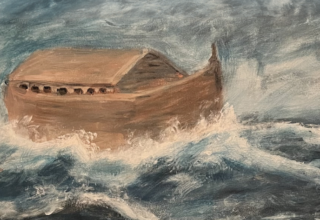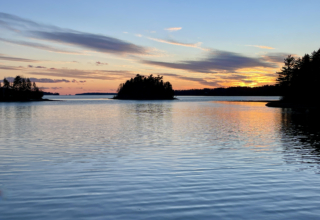
The project team went to retirement communities to talk with the homesteaders. As a way of encouraging the recall process and reassuring the story-tellers that their life histories were of value, we presented them with a heart-felt and poignant film about homesteading, called Heartland. After showing the movie, we sat with these elderly homesteaders to listen to and record their stories of growing up on the prairie. Their stories revealed much about the ways in which pioneers coped with harsh conditions of the prairie and how they found creative solutions to such problems as insect infestation, droughts, fires and tornados, and a profound sense of isolation. Core values were revealed in these stories, and the pioneering folk felt honored to be asked about their lives. Those of us who witnessed these stories felt equally honored.
Another Generativity Three story involved one of us being indirectly involved in a project in Chicago. This project focused on once-vibrant, but now threatened, ethnic communities. As in the case of the Montana homesteading project, the elderly residents of these communities shared their life stories with members of the project team. In addition to their oral histories, the team collected pictures, 8 mm home movies, posters, newspaper articles and other documents representing the history, values, and aspirations of these communities. A multi-media display was prepared for each ethnic community, including the voice recordings of the story-tellers. The displays were presented in many venues, including storefronts, banks, and other commercial establishments located in the ethnically-based Chicago communities. Men, women, stories, visual images and other documents were thus shared in a very generative manner with those who still lived in these communities. Residents were able to recognize and celebrate their unique heritage and reaffirm their own community values, despite the disruptive social-economic challenges being faced in their community.
The displays were also brought together at the Field Museum in Chicago. The designers of museum displays constructed an accompanying visual commentary about the decay and fragmentation of the ethnic communities. Arching over the top of the displays were large cardboard photos of the freeways that ran through the heart of these communities. The freeway structures served as bridges above and across the communities for commuters wishing to return to their suburban homes with minimal distractions and as quickly as possible. Sadly, these freeways were of little benefit to the people still living in homes located below the freeways. Furthermore, the freeways often disrupted the flow of people and commerce in the ethnic communities, accelerating their social and economic decline. We see in this Chicago project a commentary on societal values, as well as a blending of story-telling, preservation, and display. As was the case with the Montana project, participants in all of the various roles in the Chicago project experienced the spirit of generativity, be they story-tellers, document providers, listeners, or document collectors.
Download Article
















Janet Locane
September 27, 2024 at 7:49 am
Thanks